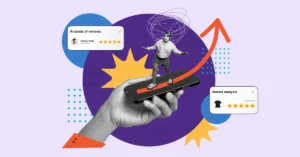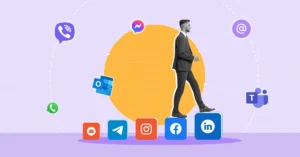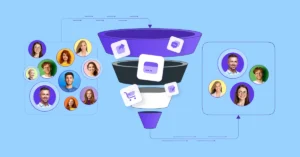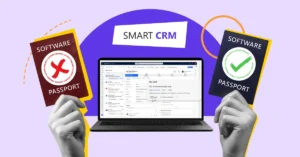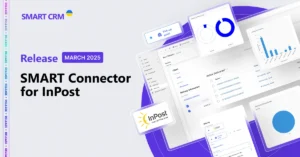Customer-oriented service: trends changing service standards
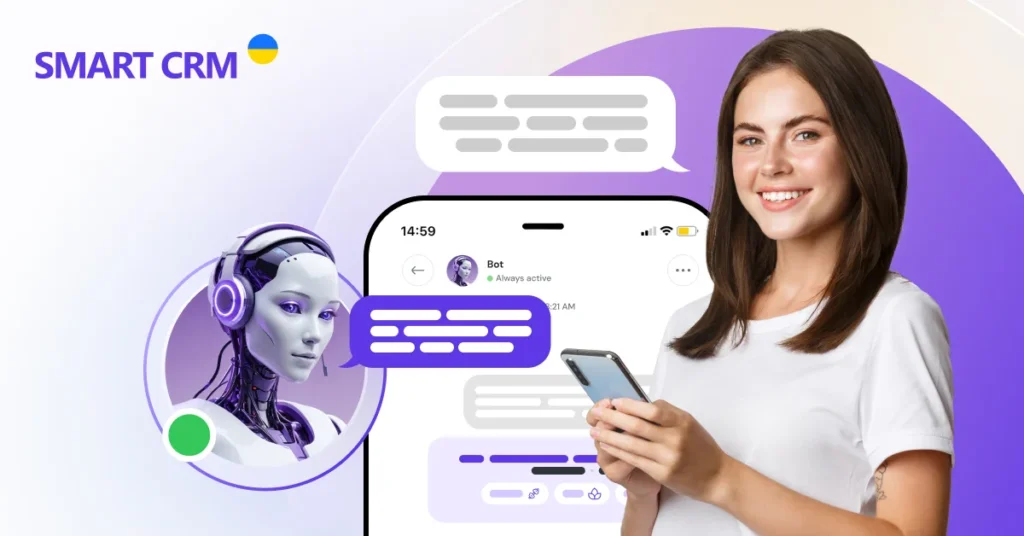
In the era of overproduction and ever-growing competition, service quality and service level are becoming key success factors for businesses, regardless of the industry they operate in.
Today, it is no longer enough to simply form an offer of a high-quality and competitive product or a service in demand. It is important to focus on differentiating yourself from competitors and forming your “personal” history of interaction with clients, building trusting and long-term relationships with them. Businesses understand that their clients are their main asset. According to Outbound Engine research, the probability that the same manager will lead a new client through the sales funnel all the way to a purchase is 5-20%. While for existing clients, this figure is 60-70%.
Consumers are more willing to return to those who invest in creating their unique customer experience, forming personalized offers and proactively solving their problems and satisfying their needs. Thus, according to the latest research by Shopify, an influential retail company, 81% of buyers are willing to pay more for a unique customer experience.
Following the trend of consumer requests, companies have recently been actively using virtual assistants and chatbots. And omnichannel round-the-clock support and personalized recommendations have already become the gold standard of service. Therefore, differentiating yourself from others requires more and more ingenuity from businesses.
Would you like to try on a make-up from L’Oreal? – how brands leverage innovative technologies to create an unforgettable customer experience
One of the key trends in modern customer service is the enhancement of familiar IT solutions with the capabilities of AI (artificial intelligence), AR (augmented reality) and VR (virtual reality).
If we talk about AI, then this technology has almost unlimited potential in terms of applicability for customer service.
Here are just a few examples. Uber uses AI for dynamic pricing, demand forecasting and route optimization, as well as for generating recommendations for drivers on the best places to wait for passengers.
H&M is actively using AI-based solutions to optimize stock and assortment based on the analysis of fashion trends and consumer activity trends.
Also, in recent years, the involvement of augmented reality (AR) in the creation of unique customer experiences has been gaining momentum. Although this technology is not as widespread as AI, experts see huge potential in it to radically change our understanding of how we shop and how we interact with a brand, product, or service. Even though in 2021, only 1% of retailers used AR technology to interact with customers, experts predict that the CAGR (compound annual growth rate) from its implementation in the retail industry will grow by more than 40% between 2022 and 2031. In addition, consumer opinion research on the use of AR in the service sector is also encouraging. Thus, according to Google research, back in 2019, 66% of consumers said they were interested in companies using augmented reality to help them shop.
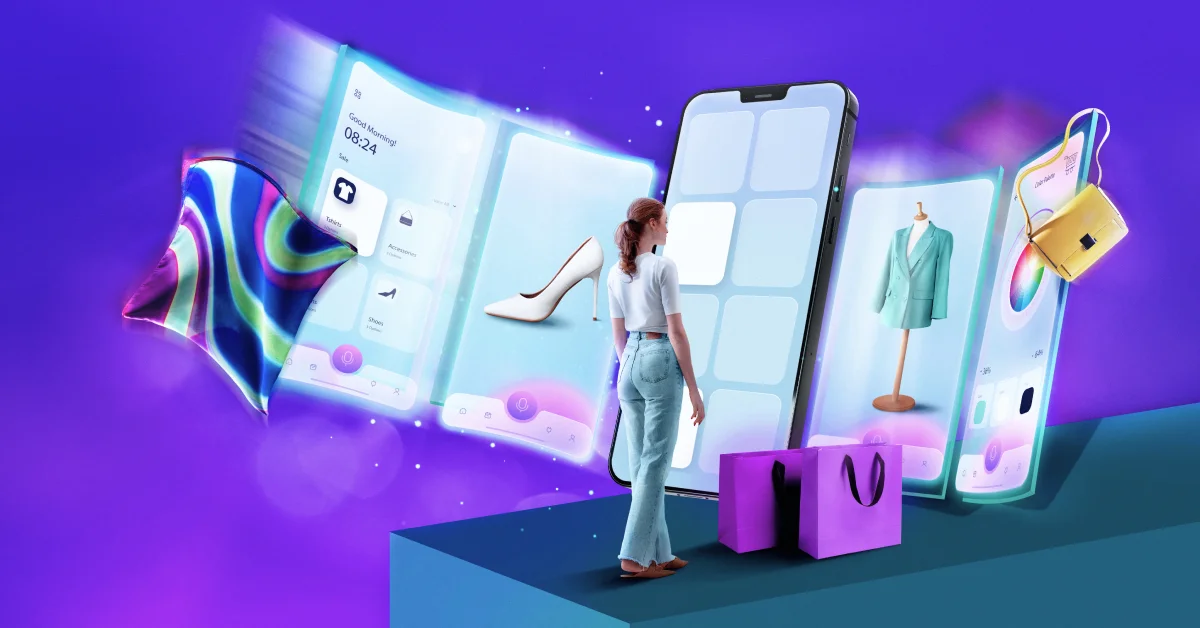
And this is natural, because by mixing the virtual and real worlds, AR makes interaction with the brand more unforgettable, thereby increasing the likelihood of repeat business and building a long-term customer history. In particular, the installation of virtual fitting rooms in physical stores from Ralph Lauren, Adidas, Nordstrom, Macy’s from the first days led to a significant increase in conversion.
But this is not the only result that skeptics could attribute to the novelty of sensations. Such a “try-on” for buyers is not only exciting entertainment, but also, as experts say, allows them to make more conscious purchases, which means it reduces the percentage of returns and increases the overall level of customer satisfaction.
So subsequently, such fitting rooms appeared at H&M and in the chain of trendy glasses stores SmartBuy. The idea was picked up by L’Oreal and Sephora. Now they allow consumers to “try on” make-up using AR. Sephora has implemented this opportunity through a mobile application and on the official website.
IKEA uses augmented reality to show how a particular piece of furniture can fit into a real interior or how new fittings can change the look of a product. And an innovative assistant for salespeople at construction chemicals company Dulux visualizes how walls painted in a certain color will transform a home’s interior.
Virtual assistants that supplement the client’s physical reality with useful audio or video content are becoming increasingly popular with the help of augmented reality technology. Instead of asking a human employee, you can simply put on a device, such as smart glasses, or go to a special application on your phone. They also work in special “kiosks” of physical stores, where they are mostly mounted in mirrors.
Such a personal assistant with augmented reality will become a reliable guide throughout the entire purchasing process. It will provide comprehensive advice on the properties of the product, its composition, “go over” the ingredients; it will help sort out the instructions, and, if necessary, will conduct a virtual demonstration. That is, this is exactly what we call “here and now” support. And this is exactly what consumers have great demand for today.
Augmented reality technology blurs the boundaries between online and offline shopping and significantly increases the number of visitors to physical stores, attracting those who, say, are used to shopping online so as not to communicate with “intrusive” consultants.
If we talk about the applicability of innovative technologies to interaction with customers, there are already examples not only of its use at different stages of sales and service. They have also allowed brands to move to a new level of storytelling. For example, in its coffee shops in China, Starbucks uses augmented reality to give visitors the opportunity to join the fascinating journey of a freshly roasted coffee bean right up to the moment it turns into a favorite aromatic drink. Thus, they strive to erase the boundaries between inspiration, discovery and purchase.
Another option for using augmented reality in interaction with customers is gamification. Brands often use this form of interaction when, say, they want to demonstrate a demo version of a release. Virtual reality (VR) is also increasingly being involved here. For example, for car brands, this is an excellent opportunity to simulate a test drive of any car from their model range and in any landscapes and climatic conditions, say, on a mountain serpentine or on a Bedouin path.
Communicate individually, interact responsibly – the golden rule of modern service
It is no secret that all interactions between consumers and businesses generate a lot of extremely valuable information. Its analysis allows companies to optimize their offers as much as possible, model consumer behavior, and predict where pain points may arise. Skillful use of innovative technologies allows us to talk not about personalization, but about hyper-personalization.
Such a 360-degree client portrait, when used skillfully, significantly increases the possibilities for both attracting new clients and maintaining existing ones. However, along with the wide opportunities, this is also a serious challenge for business, since the requirements for data security are significantly increasing. Trust and work on creating sustainable long-term partnerships between brands and consumers come to the fore.
So, according to the Forbes research conducted in 2023, 50% of consumers are ready to share their data with companies to improve service and get positive emotions. Therefore, this needs to be done. Customers should be encouraged to provide information about their preferences and innovative technologies, including artificial intelligence, should be involved in collecting and analyzing it. But it is very important to adhere to the principles of transparency and honesty and always report what this or that data is needed for, and that artificial intelligence is involved in collecting and processing it.
According to a study by Magna, 74% of respondents said that they highly value the privacy of their own data, and 82% are concerned about how companies use it. Therefore, when working with data, it is important to comply with the requirements of GDPR, CCPA, LGPD and HIPAA to ensure the reliable safety of customer information. This affects the choice of tools for processing and storing customer data.
Another new reality that is already confidently dictating the terms of sales and service for businesses is proactive support. Today, this is a trend that is being chosen by more and more customer-oriented companies. Based on a thorough analysis of the history of interactions with the brand, they inform their customers about new products that interest them or create individual offers; anticipate questions related to dates, delivery times and notify them of any changes in advance.
Amazon is often cited as an example of a brand that proactively interacts with customers. However, there are already enough such companies in Ukraine. If we talk about the quality of communication with their own customers, then the experience of Maudau deserves attention. For example, immediately after accepting an order, the company informs customers in detail, but in the most friendly and relaxed manner, about its status at each stage, right up to the moment of delivery, although this is not the end of communication. Here, they do not simply declare the standard “your opinion is important to us”, but encourage customers to communicate after the order is completed, give bonuses in exchange for feedback and carefully study the feedback, which allows them to become even better.
However, when encouraging consumers to communicate, it should be remembered that it should take place in a channel that is familiar and convenient for each of them, and at the same time its history should be available at each moment of contact. The clients should not talk about their problem or customer experience, say, first to the bot, then to the operator. Because true omnichannel is no longer just a business presence in many channels. It is a holistic, “seamless” online/offline support strategy that is based on a deep understanding of the clients. Both through the collection and processing of a large amount of information about them, and through a high level of empathy and emotional intelligence of the staff.
And if the technical side is about the implementation of “smart authentication” and modern CRM, then the human factor is a comprehensive and ongoing training of staff. Both options require considerable investment, but such an investment is justified.
Thus, according to McKinsey, in 2023, companies implementing omnichannel support have 91% higher retention rates compared to a previous approach to customer service. And the Dixa platform sites the data from its own research, according to which in 2022, 96% of consumers named empathy as one of the key aspects in the process of providing service support. Therefore, those companies that prioritize this quality of their staff have another competitive advantage in the form of high customer loyalty. Therefore, many companies now practice communication of support specialists in the format of a video call. This helps to establish closer contact and forms a feeling of real care for the client on the part of the company.
What opportunities does SMART business offer to upgrade service
First, this is Copilot, a tool based on artificial intelligence or a smart assistant for a manager in performing work tasks.
It is important to note that this is not just about integrating a generative model into Microsoft 365. Copilot is a modern tool that combines Microsoft 365 apps with Microsoft Graph data and analytics and the GPT-4 neural network. Microsoft Graph allows you to process a unique user context, and, therefore, make the process of interaction between a business and a client more effective. In other words, it is an AI-based assistant that expands the capabilities of “branded” services and simplifies routine tasks of service personnel.
If we talk about Copilot in Dynamics 365 Customer Service, the key scenarios for its use in service are for text communication between the company’s support service and clients: both by email and via a chat bot. The main advantage of using this tool is not only a significant reduction in the time it takes to prepare a response. The recommendation that Copilot prepares will be more thorough, which means it will help increase customer satisfaction with the level of service and their loyalty to the company or brand as a whole.
Why? Because Graph allows you to “see” all the information posted by the company in the Microsoft cloud and use it as a context for creating the necessary content. Thus, Copilot forms each response based on the context and history of customer requests (regardless of the channel of request), as well as internal documentation, previously closed similar cases, and information that is on trusted websites and in the knowledge base. At the same time, a high level of confidentiality and security is ensured. After all, the AI does not use this data for training and does not transfer it to third parties. It adheres to the company’s established policy of individual and group permissions and inherits the security policies that the business has set up for Dynamics 365 Customer Service.
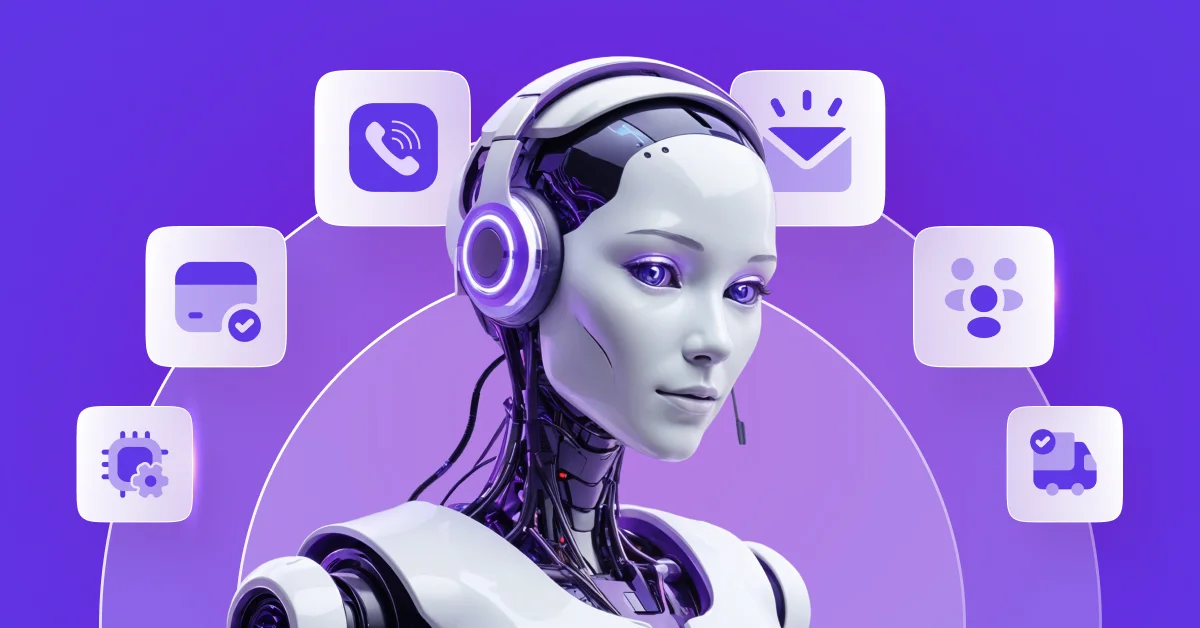
Other smart assistants worth paying attention to include the following:
- Segment – collects and monitors huge amounts of customer information in real time. Helps to understand the requests of each client, predict their needs in the future and build effective personal communication and interaction.
- Typeform – quickly creates online forms for collecting customer feedback and other important data for the company (FAQ, NPS, level of satisfaction with the product/service) using a template.
- Klaus – collects and analyzes data based on feedback received from customers. Helps to identify weak points in the service process and improve the level of service support.
- Polymer – simplifies business analytics (BI), “extracting” valuable insights from the volume of data generated in the process of providing service support. Automatically generates convenient and visually attractive dashboards.
- BetterFeedback – “specializes” in identifying the needs and pain points of customers through a thorough analysis of their feedback.
Another offer from SMART business is SMART Customer Care. This is a solution in the SMART CRM line for improving the level of service. Built on the Microsoft Power Platform, it allows you to implement a comprehensive integration of the company’s support service and manage customer requests in real time from a single window.
Functionally, SMART Customer Care allows you to manage:
- a client base,
communications (registers a request regardless of the channel of its receipt and allows you to view it),
- service (consolidates information about the request and the response to it).
It is important that the solution will be effective both for automating the customer support center of a powerful company and for establishing effective service for a small business. After all, SMART business offers an entire ecosystem of IT solutions that will allow you to build an effective customer support service, even if the company can allocate only one employee for this process.
Multichannel support is implemented here thanks to additional modules through which external communication channels are connected. In particular, it is SMART Chat, which enables communication with clients via various messaging platforms (Facebook, Instagram, Viber, WhatsApp, Telegram) and SMART Easy Bot, a module that allows you to customize the structure of your chatbot in Viber and/or Telegram in Power Apps (for example, buttons or registration steps).
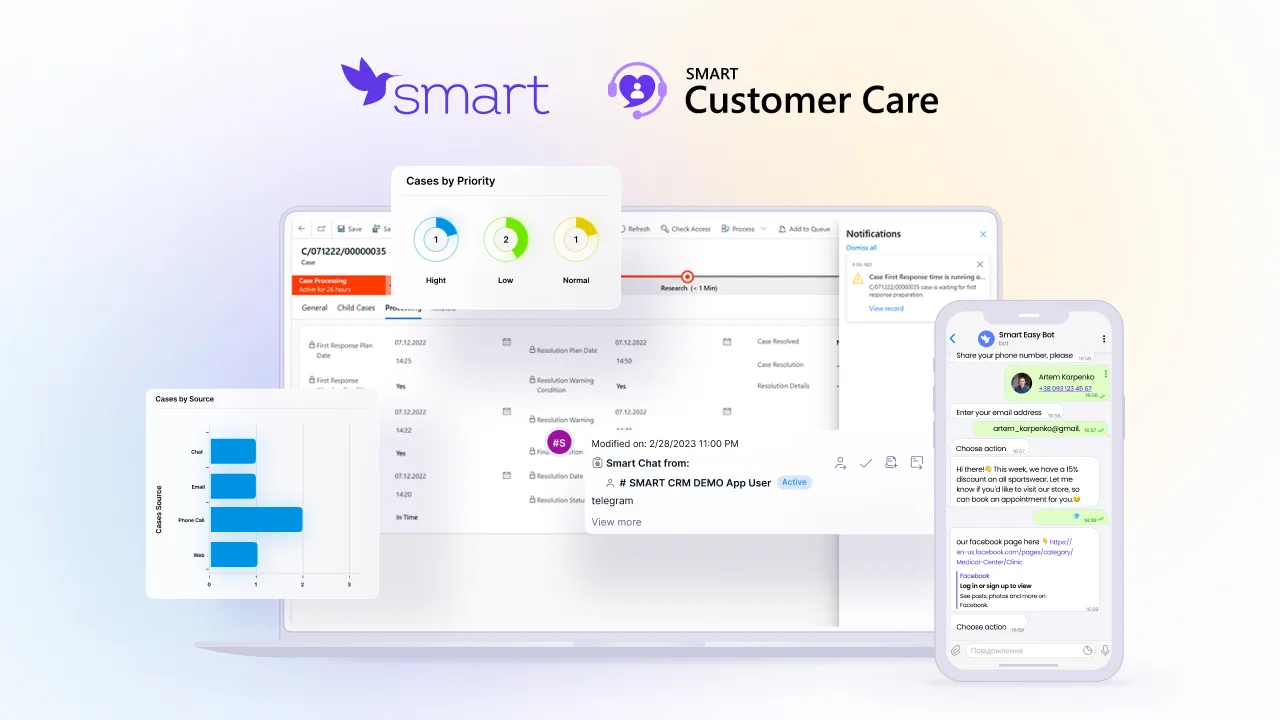
These two modules can be either standalone or interconnected. For example, SMART Easy Bot can implement the ability to switch to an operator who is already working in SMART Chat and SMART Connector for Telephony (processes telephone calls). The operator, without switching from their workplace, can give quick answers. At the same time, they see through which channel the client is contacting and the entire history of their calls and interactions with the company.
Thus, SMART Customer Care allows you to organize the effective work of a comprehensive support service. In addition, Open AI can also be used here. For example, artificial intelligence can be used not only for communication, but also for a more thorough study of the client, creating their emotional portrait.
For example, AI makes a summary of the client’s telephone call, evaluates the level of emotionality of this communication with the consultant. Subsequently, it analyzes the tone of this client’s email or any other interactions. And already based on a thorough analysis, it predicts how this client, say, will react to the next offer of the manager or prepare instructions on how to communicate with them in the future.
Thus, SMART Customer Care ensures a quick and accurate response to customer requests, which is key to maintaining a high level of satisfaction. The use of such tools helps to optimize the processes of interaction with clients, bringing them to a qualitatively new level, which will allow companies not only to meet customer expectations, but also to exceed them. In today’s conditions, this is an important competitive advantage. And for business, this is an asset with a high degree of liquidity.
However, a modern customer service system is not a system of guardianship, but a partnership. We should not forget that today’s consumer has a huge demand for self-development. Therefore, when building a company’s customer service system, it is necessary to take care of the ability of clients to independently resolve various situations. This can be achieved by automating, where possible, service processes and maximally optimizing applications. In particular, from the standpoint of interface usability and user experience.
Innovative technologies provide virtually unlimited opportunities for improving the quality of customer service. It is important that companies and brands, when choosing strategic solutions for building interactions with clients, are guided by the understanding that the golden share is always with the client.
